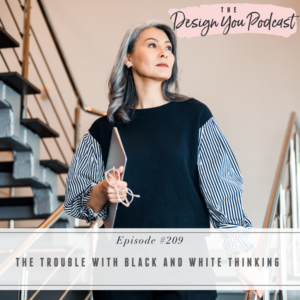
As humans, we love certainty. We love labels, categorizing things, and putting things into boxes, and we do this in a very dualistic way. It’s called black and white thinking. But we get to decide for ourselves exactly what we want to believe, and we can still hold space for people who think differently to us.
Life isn’t black and white. Despite our brains wanting to make things so cut and dry and dualistic, there is a grey area. But being in the grey area requires our brains to expend energy and do a lot of complex thinking, and people intentionally choosing to go to this place. And this week, I’m showing you how to explore the grey.
In this episode, I’m explaining what black and white thinking is, how it shows up in our lives and why it can cause us so many issues. I’m sharing the concept of both/and, some decisions I have made in my life due to black and white thinking, and I’m showing you how to hold two contrasting ideas at the same time.
Are you ready to master your mind and redefine new levels of success in your life and business? You do not want to miss Success Week! Every day from March 28th through April 1st, I’ll be coming to you live with the exact steps and strategies I used to redefine success in my life. Discover how to coach yourself through life-altering shifts and bust through the upper limits that have kept you at the same level of success for years, and start creating million-dollar ideas. Click here for full information and to sign up now.





